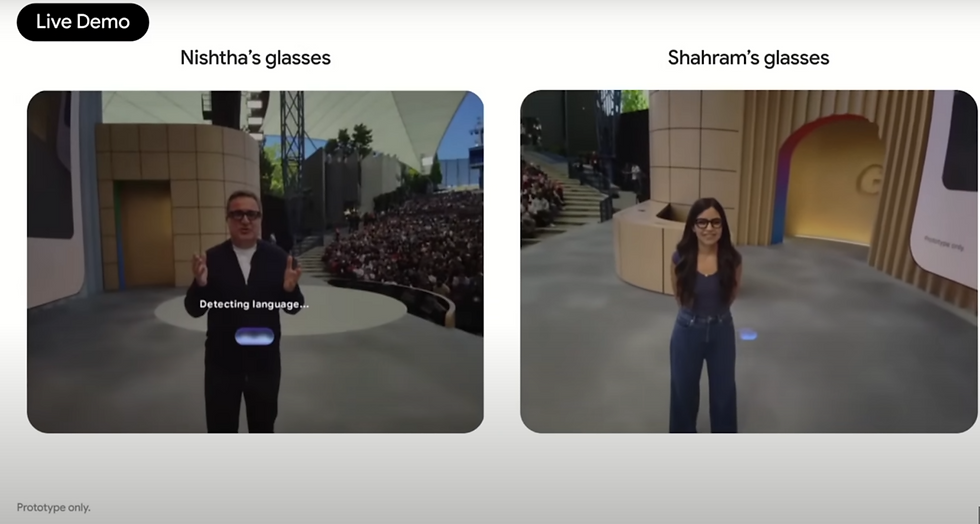Decoding AI Glasses Chipset Solutions: Understand the Core, Know the Product
- May Mei

- Apr 10
- 3 min read
When I looked at a long list of AI glasses brands and their chipset solutions, one question came to mind: How do I make sense of this?
It may seem like a jumble of part numbers—but behind those choices lies the DNA of the product: its performance, positioning, and potential.
So I dug in—and found that understanding the chip architecture can reveal at least 50% of what an AI glasses product truly is.
Three Chipset Solution Routes (Form Factor–Based)
To simplify how we evaluate AI glasses, we can categorize current industry solutions into three main chipset routes, based on their form factor and system design approach.
1. Native Glasses SoCs – Built for AR/AI Wearables
These are purpose-built SoCs designed specifically for AR glasses. They offer high integration, strong performance, and full support for camera, display, AI processing, and advanced sensors.
Typical Solution: Qualcomm AR1 / AR2
Representative Products: Ray-Ban Meta, RayNeo V3
Pros: All-in-one performance; supports camera, display, and AI tasks
Cons: Higher cost and power consumption
2. SoC + MCU – Balanced Performance and Efficiency
This dual-chip strategy combines a mobile-grade SoC (e.g., MTK6765 or AR1) with a Bluetooth/audio MCU (e.g., BES2700). The SoC handles system-level tasks such as camera input, display rendering, and AI, while the MCU manages Bluetooth, audio playback, and low-power background functions.
This architecture offers a practical balance between performance and cost, making it suitable for scalable, commercially viable AI glasses.
Typical Solution: AR1 + BES2700, MTK6765 + BES2700
Representative Products: Xiaomi AI Glasses (rumored for June), XingYi Intelligent (XYIntelligent)
Pros: Modular, flexible, power-efficient, scalable
Cons: Requires precise integration and firmware coordination
Development Strategy: Xiaomi vs. Ray-Ban Meta
One common question is: Why does Xiaomi adopt AR1 + BES2700, while Ray-Ban Meta relies on just AR1?
The difference lies in product development strategy.
Ray-Ban Meta was co-developed with Qualcomm and optimized around the AR1 platform—resulting in a fully integrated, single-chip architecture.
Xiaomi, however, pairs AR1 with BES2700 to:
Reuse proven audio firmware stacks
Leverage TWS audio development experience
Simplify system integration
Accelerate product launch timelines
For brands rooted in audio-centric ecosystems, this hybrid approach is efficient and strategic.
3. MCU-Based Lightweight Architecture – Camera-Free, Fast-to-Market
This architecture leverages low-power Bluetooth MCUs—sometimes combined with ISP or voice chips—to support audio interaction, display output, and smart assistant access, but without including a camera.
By skipping the camera module, brands can simplify system design, reduce regulatory complexity, and accelerate time-to-market, while still delivering essential smart functionality.
Typical Solution: BES2800
Representative Products: Meizu StarV Air 2 (includes display, no camera)
Pros: Lightweight design, fast to market, focused user experience
Cons: No image capture or visual sensing capability
Chipset Architecture Comparison

What's Next for the Industry?
Being based in China and actively engaged in this industry, I’ve noticed something important: The media buzz is high—but the real-world product quality and user experience still vary greatly.
Many chipset makers are now actively developing AI glasses–specific system-level solutions. These typically combine MCU, Bluetooth, ISP, and DSP into all-in-one development platforms for ODMs and brand manufacturers.
Want to see where things might go? Just look at the evolution of smartphones and TWS earbuds. Smart glasses combined with AI is an exciting new wave—but many of the battles we’re about to face will look very familiar.
📚 Reference: WeChat Official Account – VR陀螺《AI眼镜波澜之下,芯片厂商开始狂飙》





Comments